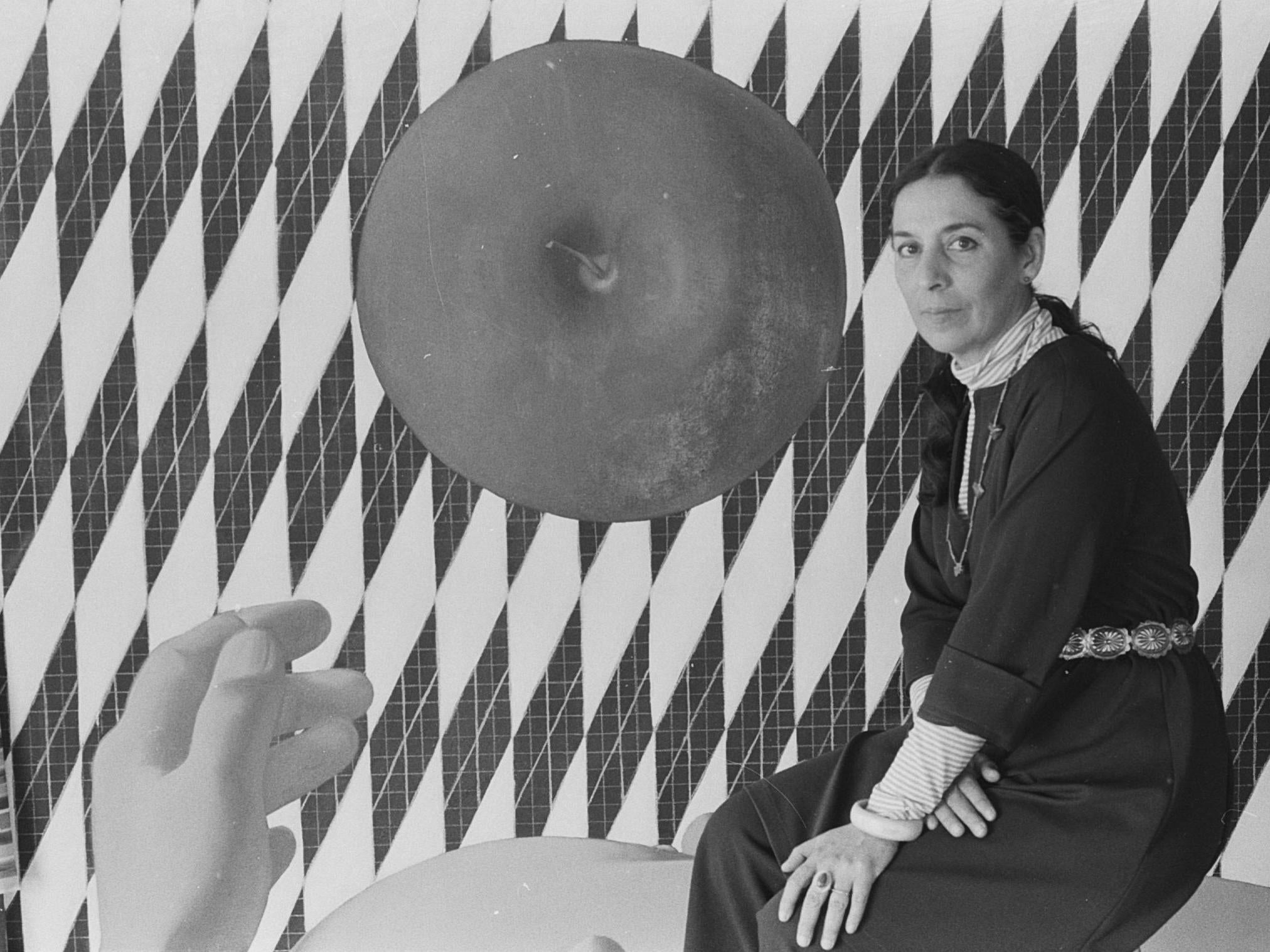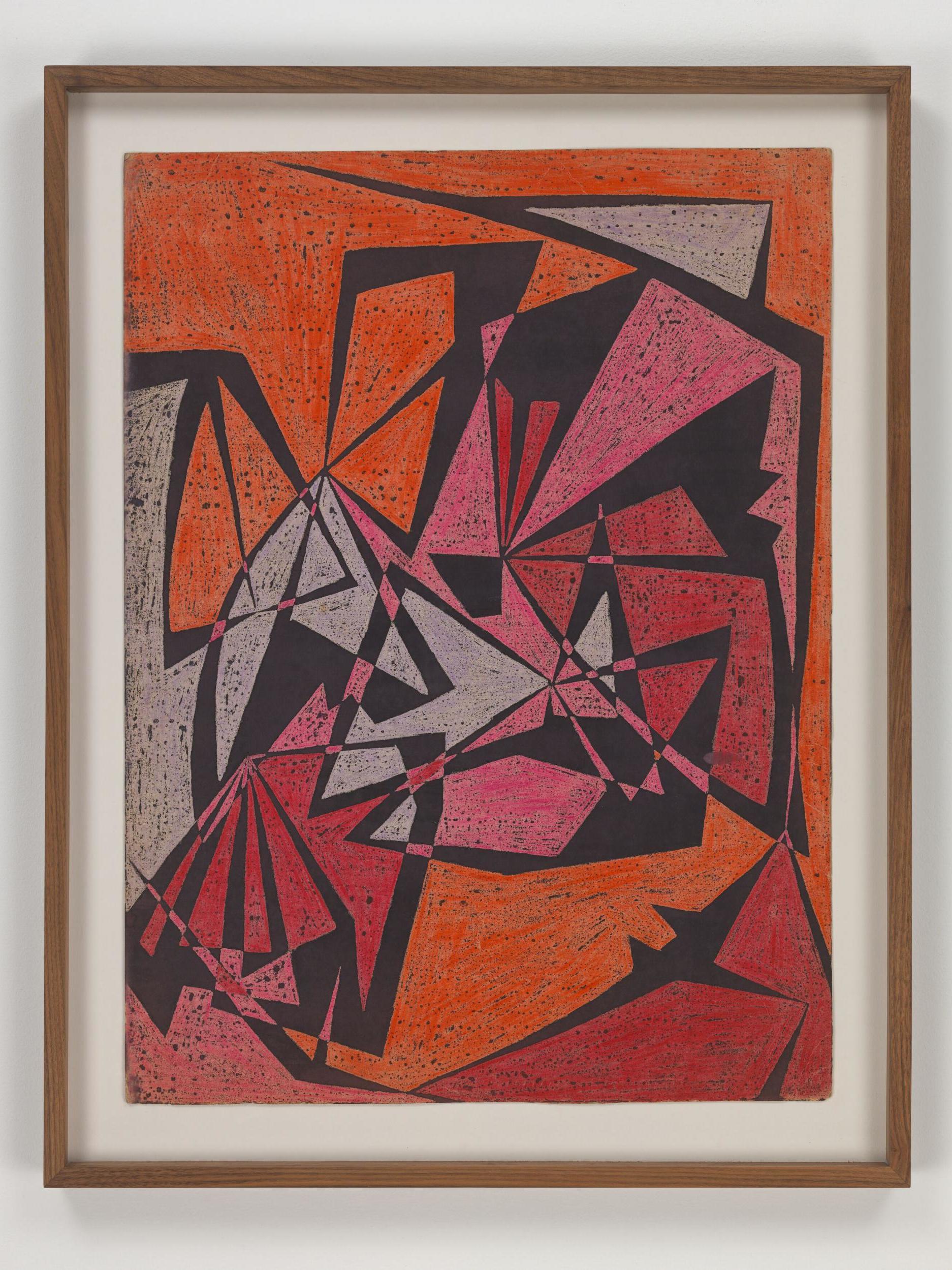Luchita Hurtado: Belatedly acclaimed for the sensual beauty of her art
For many years, she would turn her works in progress to face the wall when anyone visited her workspace

Luchita Hurtado was an artist who laboured for decades in near-anonymity until her collection of works – vibrant, sensual paintings – received sudden international attention when she was in her nineties.
She died on 13 August at her home in Santa Monica, California. She was 99. Her death was confirmed by her gallery, Hauser & Wirth, which did not cite a specific cause.
Hurtado was the unusual artist, a writer for the Los Angeles Times once observed, who “lived at the centre of the art world – yet also at its margins”.
Through her marriages, including to the surrealist painter Wolfgang Paalen and to Lee Mullican, a member of a surrealist movement known as Dynaton, she met and befriended such figures as the Mexican painter Frida Kahlo, her husband, the Mexican muralist Diego Rivera, and Japanese American sculptor Isamu Noguchi. She said that Marcel Duchamp, the conceptualist who reimagined a urinal as a work of art, once gave her a foot massage.
Unbeknown to many of her acquaintances, Hurtado was also a committed artist, working at the kitchen table after her children had gone to sleep in a style that evolved to include elements of surrealism, abstract art, Indigenous motifs and portraiture. For many years, she would turn her works in progress to face the wall when anyone visited her workspace.
“I always felt shy of it. I didn’t feel comfortable with people looking at my work,” she told The New York Times last year. “There was a time when women really didn’t show their work.”
Hurtado had one solo exhibit, in Los Angeles in 1974, and presented her works in occasional group shows. But she remained largely undiscovered until 2015, when Ryan Good, a curator organising Mullican’s estate, happened upon painting after painting signed with the initials “LH”. Knowing Hurtado only as Luchita Mullican, he asked who the artist might be.
“That’s me!” she replied.
The next year, Park View Gallery in Los Angeles mounted an exhibition of her works from the 1940s and 1950s. In 2018, she was among the artists featured in the “Made in LA” biennial at the Hammer Museum.
In 2019, the Serpentine Sackler Gallery in London presented what it described as her first solo exhibition in a public institution, titled Luchita Hurtado: I Live I Die I Will Be Reborn. It later opened at the Los Angeles County Museum of Art. Time magazine ranked her among the 100 most influential people in 2019.
“I still don’t believe it, to tell you the truth,” Hurtado said on NBC’s Today show last year, reflecting on the fame that she never had imagined might come.
Her works ranged widely in their styles and themes, from modernist abstraction to paeans to the Earth amid the threat of climate change. But she received particular acclaim for her I Am series dating to the 1960s, which depicted female nudes from an orientation that some curators at first failed to understand.
They showed “the female form ... in unusually foreshortened perspective, breasts, belly, legs and feet almost abstracted into a dune-like landscape”, a writer for The Daily Telegraph observed.
“The bodies were assumed to belong at the top of the frame, opposite the viewer, as if they were the object of another person’s gaze,” when in fact “the body goes at the bottom of the frame. You’re seeing it closest to you because it’s a self-portrait, the artist looking down at herself.”
Luisa Amelia Garcia Rodriguez Hurtado was born on 28 November 1920, in Maiquetia, Venezuela, a coastal city near Caracas. She moved when she was eight to New York City, where her mother worked as a seamstress. (Her father stayed in Venezuela.) Hurtado, too, was supposed to be a seamstress but clandestinely studied painting rather than dressmaking when she was in high school.
At 18, she married Daniel del Solar, a Chilean journalist who began introducing her to the artists and thinkers who in turn drew her further into the art world. But it would be years before she could devote herself fully to her creative work. After she and del Solar divorced, Hurtado supported their two young sons in part by designing window displays at the Lord and Taylor department store.
She enrolled in the Art Students League and, through Noguchi, met Paalen, with whom she lived for a period in Mexico. Their marriage ended after the death of one of her sons, Pablo, who had contracted polio.
“Paalen told me that he couldn’t have children because everyone in his family committed suicide, and he didn’t want to pass that on,” she recalled years later in an interview with the online publication Artnet. “I needed a child, and he understood.”
Hurtado moved to California, where she became reacquainted with Mullican. They were married for 40 years before his death in 1998. Survivors include their two sons, Matt Mullican of New York and Berlin and John Mullican of Los Angeles; and two grandchildren. Another son from her first marriage, Daniel del Solar Jr, died in 2012.

Pursuing her artwork while raising her children was a struggle, Hurtado said years later. But “it was like breathing”, she said – “you know, it’s hard not to”.
By the end of her life, her works were housed in institutions including the Metropolitan Museum of Art and the Museum of Modern Art in New York.
“Her vision of the human body as a part of the world, not separate from nature, is more urgent today than ever,” Hans Ulrich Obrist, artistic director of the Serpentine Galleries in London, wrote in Time in 2019.
“Luchita’s masterly oeuvre offers an extraordinary perspective that focuses attention on the edges of our bodies and the language that we use to bridge the gap between ourselves and others. By coupling intimate gestures of the body with expansive views of the sky and the earth, Luchita maps a visceral connective tissue between us all.”
Hurtado met Kahlo and Rivera in Mexico, in an era when Kahlo – now one of the most famous artists in the world – was less recognised than her husband. It was a matter that Hurtado said the two women never discussed.
“We never talked about those things!” she told Artnet. “We talked about dinner, and ordinary things. Frida would be amazed by how famous she has become for the paintings she did. I think it would have amused her to no end.”
Luchita Hurtado, artist, born 28 November 1920, died 13 August 2020
© The Washington Post
Join our commenting forum
Join thought-provoking conversations, follow other Independent readers and see their replies
Comments
Bookmark popover
Removed from bookmarks